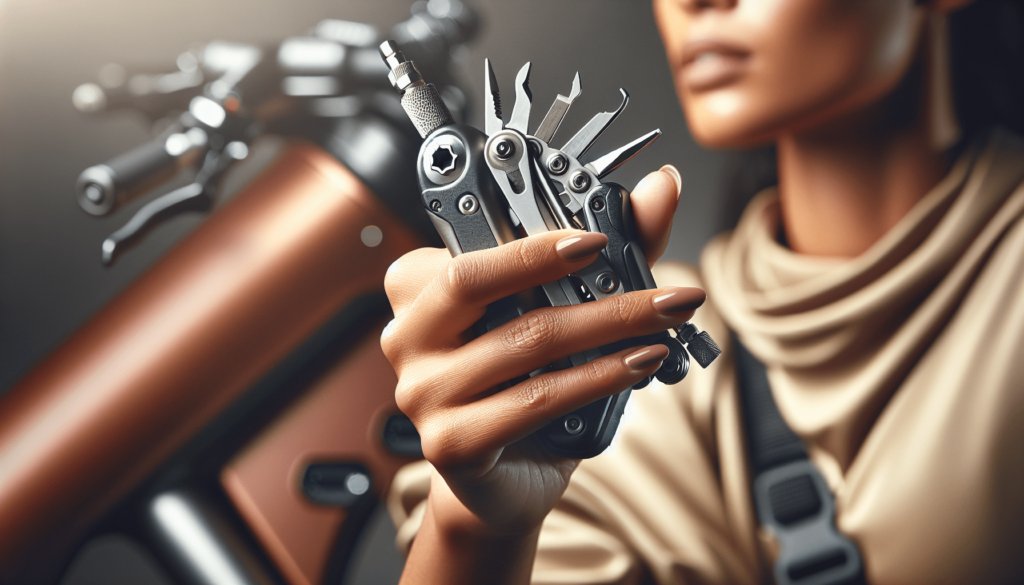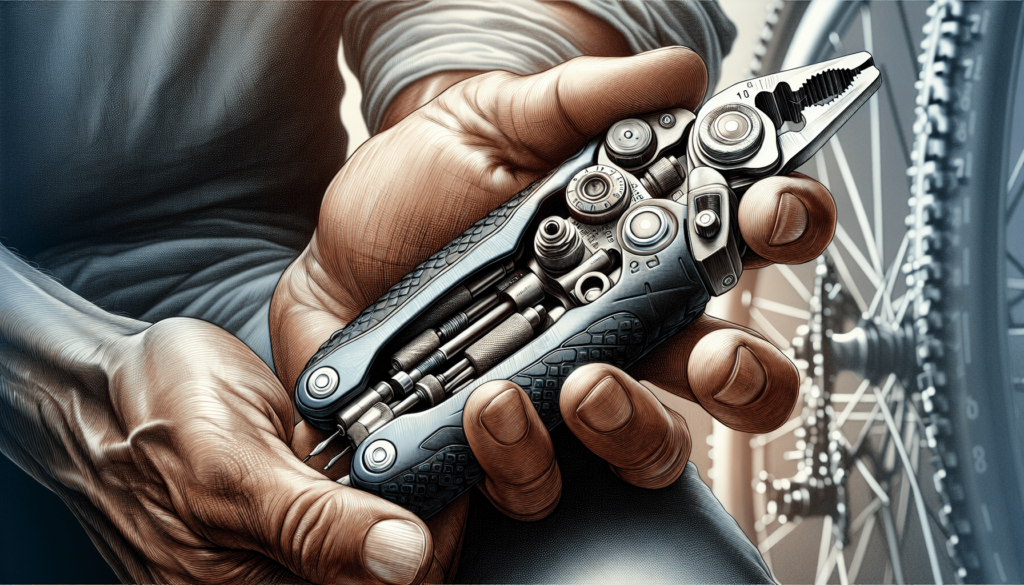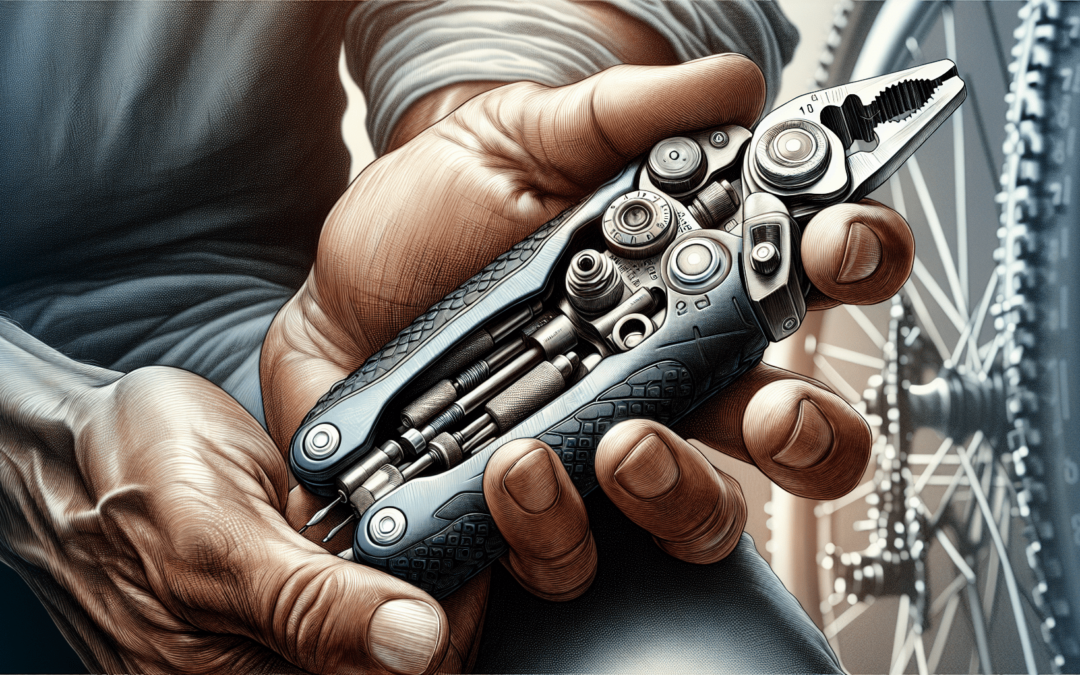If you’re an e-bike enthusiast and faced with a malfunctioning e-bike controller, you’re in the right place! This article aims to guide you through the process of troubleshooting common issues that may arise with your e-bike controller. Whether it’s a connectivity problem, a software glitch, or a faulty component, we’re here to help you navigate through these challenges and get your e-bike back on the road in no time. So, grab your tool kit and let’s unravel the mysteries of e-bike controller troubleshooting together!

General Overview
What is an e-bike controller?
An e-bike controller is the central component of an electric bicycle. It acts as the brain of the e-bike, regulating the power supply from the battery to the electric motor based on the user’s inputs and the settings of the controller. The controller receives signals from the throttle, brakes, and other sensors, and controls the motor to provide the desired power output.
Why is the e-bike controller important?
The e-bike controller is crucial for the proper functioning of an electric bicycle. It determines the speed and power of the motor, controls the responsiveness of the throttle and brakes, and allows for customization of various settings. A well-functioning controller ensures a smooth and enjoyable riding experience, while any issues with the controller can lead to decreased performance, safety concerns, and inconvenience.
Common issues with e-bike controllers
Like any electronic component, e-bike controllers can experience various problems over time. Some of the most common issues include power supply failures, display malfunctions, motor problems, throttle and brake issues, wiring and connection problems, controller settings and programming errors, temperature and environmental factors affecting the performance, and sensor malfunctions. Understanding and troubleshooting these issues can help in resolving them effectively.
Checking Power Supply
Inspecting the battery connections
One of the first steps in troubleshooting e-bike controller issues is to inspect the battery connections. Ensure that the battery terminals are securely connected to the controller and there are no loose or corroded connections. Clean any dirt or corrosion from the terminals and reconnect them properly. Loose or faulty battery connections can cause power supply disruptions and affect the performance of the e-bike.
Testing the voltage output of the battery pack
To ensure that the battery is providing an adequate voltage to the e-bike controller, you can use a multimeter to test the voltage output of the battery pack. Connect the positive and negative probes of the multimeter to the corresponding terminals of the battery and check the voltage reading. Compare the reading with the specified voltage range for your e-bike model. If the voltage is significantly lower, it may indicate a problem with the battery or its connection.
Checking the fuse
If the e-bike controller is not receiving any power or is intermittently losing power, it is advisable to check the fuse. Locate the fuse on the controller or in the battery compartment and inspect it for any signs of damage or blown fuse. Replace the fuse if necessary with the correct rating as specified by the manufacturer. A blown fuse can disrupt the power supply to the controller and render it non-functional.
Verifying the power switch
Sometimes, the issue with the e-bike controller can be as simple as a malfunctioning power switch. Verify that the power switch is in the ON position and firmly engaged. If the switch feels loose or unresponsive, it may be necessary to replace the power switch. A faulty power switch can prevent the controller from receiving power and cause various malfunctions.
Display Issues
No display or dim display
If your e-bike controller does not display anything or the display is too dim to read, there may be a problem with the display itself or its connection to the controller. Check the display cable for any loose or faulty connections. Ensure that the display is receiving power by checking the power supply to the display module. If the connection and power supply are fine, but the display is still not working, it might require replacement.
Incorrect or unreadable information
In some cases, the e-bike controller’s display may show incorrect or unreadable information. This can be due to software glitches or programming errors. Try resetting the controller to its default settings and check if the issue persists. If the problem persists, consult the manufacturer or a professional technician for further troubleshooting and potential software updates.
Unresponsive buttons or touch screen
If the buttons on the e-bike controller or the touch screen are unresponsive, it could indicate a problem with the controller’s input system. Check for any physical damage to the buttons or touch screen. Clean the buttons and touch screen to remove any dirt or debris that may interfere with their functionality. If the issue persists, it may require replacing the input components or seeking professional assistance.
Motor Problems
E-bike not accelerating
If your e-bike is not accelerating as expected or lacks power, it may indicate a problem with the e-bike controller’s output to the motor. Check the throttle connection to the controller and ensure that it is securely connected. Test the throttle for smooth operation and ensure that it is sending the correct signals to the controller. If the throttle is functioning properly, but the motor is still not accelerating, it might be a motor issue rather than a controller problem.
Jerky or inconsistent power output
A noticeable jerkiness or inconsistency in the power output of the e-bike can be attributed to the controller not regulating the power properly. This can be due to incorrect settings or software glitches. Try resetting the controller to factory settings and reconfigure the power and speed settings as per your preference. If the problem persists, it is advisable to consult the manufacturer or a professional technician for further diagnosis and potential software updates.
Unusual noises from the motor
If you hear any unusual noises, such as grinding or rattling, coming from the motor, it may indicate a problem with the motor itself. However, sometimes these noises can be a result of the controller not communicating with the motor correctly. Ensure that the motor connections are secure and properly attached to the controller. If the noises persist, it is crucial to have the motor inspected by a professional technician to determine the exact cause.
Motor overheating
Overheating of the motor can be caused by a variety of factors, including the power supply from the e-bike controller. If the motor gets excessively hot during normal operation, it may indicate that the controller is providing too much power or not regulating the power effectively. Check the power settings on the controller and adjust them to a lower level if necessary. If the problem persists, consult the manufacturer or a professional technician for further assistance.

Throttle and Brake Issues
Throttle not responding or sticking
If the throttle on your e-bike is not responding when you twist it or feels stuck in a particular position, it may indicate a problem with the throttle itself or its connection to the controller. Inspect the throttle cable for any signs of damage or wear. Ensure that the throttle is securely connected to the controller without any loose connections. If the issue persists, it might be necessary to replace the throttle or seek professional assistance.
Brake sensor malfunction
The brake sensors on an e-bike are important for ensuring safe and smooth operation. If the brake sensors are malfunctioning, it can lead to issues with the e-bike controller. Test the brake sensors by applying the brakes and checking if the motor cuts off as expected. If the motor does not stop or there is a delay, it indicates a problem with the brake sensors. Clean the brake sensors and adjust their position if necessary. If the problem persists, consult the manufacturer or a professional technician for further troubleshooting.
Intermittent throttle or brake operation
Intermittent operation of the throttle or brakes can be frustrating and potentially dangerous. Check the connections between the throttle/brake sensors and the controller. Ensure that all connections are secure without any loose wires or damaged terminals. Inspect the wiring harness for any signs of damage or wear. Replace any faulty connectors or terminals if necessary. If the issue continues, it is advisable to consult a professional technician for further diagnosis and repair.
Wiring and Connection Problems
Loose or frayed wires
Loose or frayed wires can disrupt the proper functioning of the e-bike controller and other components. Inspect the wiring connections on the e-bike, specifically those related to the controller. Ensure that all wires are securely connected and there are no loose or disconnected wires. If you notice any frayed or damaged wires, it is important to repair or replace them to maintain optimal performance.
Faulty connectors or terminals
Faulty connectors or terminals can cause intermittent power supply issues and other malfunctions in the e-bike controller. Check all connectors and terminals related to the controller for any signs of damage or corrosion. Clean the connectors and terminals to remove any dirt or corrosion that may affect the connection. Replace any faulty connectors or terminals to ensure a secure and reliable connection.
Damaged wiring harness
The wiring harness of an e-bike is responsible for connecting various components, including the controller, battery, motor, and sensors. Any damage to the wiring harness can lead to a range of electrical problems. Inspect the wiring harness for any signs of cuts, abrasions, or wear. Repair or replace any damaged sections of the harness to ensure proper functionality of the e-bike and its controller.
Water damage to connectors
Water damage is a common issue with e-bike connectors, especially if the e-bike is exposed to wet or rainy conditions. Water can cause corrosion and short circuits in the connectors, leading to malfunctions in the e-bike controller. If you suspect water damage, disconnect the affected connectors and inspect them for signs of corrosion or moisture buildup. Clean and dry the connectors thoroughly before reconnecting them. Consider using protective covers or sealing the connectors to prevent future water damage.
Controller Settings and Programming
Resetting the controller to default settings
If you are experiencing persistent issues with the e-bike controller, resetting it to its default settings can help eliminate any software glitches or misconfigurations. Refer to the manufacturer’s instructions or user manual to find the specific process for resetting the controller. Keep in mind that resetting the controller will erase any customized settings, so it’s important to note down any important configurations beforehand.
Adjusting speed or power settings
Some e-bike controllers offer the flexibility to adjust the speed or power settings to suit individual preferences. If you feel that the e-bike is not providing the desired speed or power output, consult the user manual or manufacturer’s instructions to understand how to adjust these settings. It is important to follow the recommended guidelines and not exceed any legal limits or safety considerations.
Updating firmware or software
Occasionally, e-bike manufacturers may release firmware or software updates to improve the performance and functionality of their controllers. Check the manufacturer’s website or contact their customer support to find out if there are any available updates for your e-bike controller. Follow the provided instructions to safely update the firmware or software. Keeping the controller up to date can potentially resolve any known issues and enhance the overall riding experience.
Temperature and Environmental Factors
Operating in extreme temperatures
Extreme temperatures, both hot and cold, can have an impact on the performance of the e-bike controller. Operating the e-bike in extremely hot conditions can cause overheating of the controller and other components, leading to malfunctions. Similarly, extreme cold temperatures can affect the battery performance and responsiveness of the controller. Avoid exposing the e-bike to extreme temperatures for prolonged periods. If riding in such conditions becomes necessary, take breaks to allow the controller and other components to cool down or warm up.
Protecting the controller from water and moisture
Water and moisture can cause significant damage to the e-bike controller and its electrical components. To protect the controller from water and moisture, consider using waterproof covers or enclosures specifically designed for e-bikes. These covers can shield the controller from rain, splashes, and other sources of water. Additionally, avoid riding the e-bike through deep puddles or submerging it in water, as it can cause serious damage to the controller and other electronics.
Avoiding excessive vibrations
Excessive vibrations can impact the electrical connections within the e-bike controller and other components. Inspect the mounting and secure attachment of the controller to the e-bike frame or designated location. Ensure that all mounting screws and brackets are tightened properly. Consider using vibration-damping materials or mounts to minimize the impact of vibrations on the controller. Regularly check and re-tighten the mounting hardware to maintain a stable and secure connection.
Sensors and Sensor Malfunctions
Checking sensor connections
The sensors in an e-bike, such as the torque sensor or pedal assist sensor, play a crucial role in providing accurate input to the e-bike controller. Ensure that the connections between the sensors and the controller are secure and free from any dirt or debris. Check for any signs of damage or wear on the sensor cables and repair or replace them if necessary. Proper functioning of the sensors is essential for the overall performance and safety of the e-bike.
Replacing faulty sensors
If you suspect that a particular sensor is malfunctioning or providing inaccurate readings to the e-bike controller, it may be necessary to replace the sensor. Consult the manufacturer’s instructions or seek professional assistance to determine the correct replacement sensor for your e-bike model. Follow the provided guidelines to disconnect the faulty sensor and connect the new one correctly. Calibration of the new sensor may be required for optimal performance.
Calibrating the sensors
Calibration of the sensors is necessary to ensure accurate readings and proper communication with the e-bike controller. Consult the manufacturer’s instructions or user manual to find the specific calibration process for the sensors on your e-bike. Follow the provided guidelines and perform the calibration carefully to avoid any errors. Properly calibrated sensors will contribute to the smooth operation and responsiveness of the e-bike.
Consulting the Manufacturer or Professional
Contacting the e-bike manufacturer
If you have exhausted all troubleshooting options and are still experiencing issues with the e-bike controller, it is recommended to contact the manufacturer directly. They have detailed knowledge about the specific model and can provide accurate guidance and assistance. Reach out to their customer support through their website, email, or phone, and explain the problem you are facing. Provide them with any relevant details, such as the model number, serial number, and a description of the issue.
Seeking assistance from a professional technician
If the e-bike manufacturer’s support is unable to resolve the controller issues or you prefer hands-on assistance, seek the expertise of a professional e-bike technician. They have the knowledge, experience, and specialized tools to diagnose and repair complex controller problems. Look for reputable e-bike repair shops or technicians in your area and schedule a visit. Discuss the issue with them and allow them to perform a thorough inspection and necessary repairs to ensure the optimal performance of the e-bike.


